A Guide to Powering your Recreational Vehicle with Green Energy
Are you ready to hit the open road in your recreational vehicle (RV) while also being a guardian of the environment? Well, you’re in the right place! This article explores various methods to harness green energy for your RV, detailing solar power, wind energy, and other sustainable practices that not only enhance your travel experience but also minimize your environmental impact. Imagine cruising through breathtaking landscapes, all while knowing you’re leaving a smaller carbon footprint behind. Sounds amazing, right? Let’s dive into the world of green energy and discover how you can transform your RV into an eco-friendly haven!
So, what exactly is green energy? In simple terms, it refers to renewable energy sources that are environmentally friendly. This includes energy derived from the sun, wind, water, and even geothermal sources. These energy forms are sustainable, meaning they can be replenished naturally and are less harmful to our planet compared to traditional fossil fuels. By utilizing green energy in your RV, you can significantly reduce your environmental impact and enjoy the great outdoors with a clear conscience. Who wouldn’t want to do their part in preserving nature while enjoying it?
When it comes to green energy options for RV enthusiasts, solar power takes the crown! It’s one of the most popular choices, and for good reason. Solar panels allow you to harness the sun’s energy, transforming it into electricity to power your RV’s appliances and systems. Imagine waking up in a beautiful campsite, with the sun shining brightly and your RV fully powered by the very rays that warm your skin. Not only does solar power reduce reliance on generators and fuel, but it also offers a quiet and efficient way to keep your energy needs met while on the road. In this section, we’ll discuss the advantages of solar panels, tips for installation, and how to choose the right system tailored to your needs.
Choosing the appropriate solar panels is crucial for efficiency and performance. But with so many options available, how do you pick the right one? Let’s break it down! There are generally two types of solar panels you’ll encounter: monocrystalline and polycrystalline. Each type has its pros and cons, and understanding these differences can help you make an informed choice. For instance, monocrystalline panels are known for their high efficiency and space-saving design, making them ideal for RVs with limited roof space. On the other hand, polycrystalline panels tend to be more budget-friendly, although they may require more space to generate the same amount of power.
Let’s take a closer look at how these two types stack up against each other:
| Type | Efficiency | Cost | Space Requirement |
|---|---|---|---|
| Monocrystalline | 15-22% | Higher | Less space required |
| Polycrystalline | 13-16% | Lower | More space required |
As you can see, both types have their unique benefits. Think about your RV’s layout and your budget when making your decision!
If flexibility is what you seek, then portable solar solutions might be the perfect fit for you. These panels can be set up anywhere, allowing you to soak up the sun’s rays no matter where you park your RV. Whether you’re camping in a remote location or parked at a bustling RV park, portable solar panels offer the versatility to generate power on the go. Plus, they’re often lightweight and easy to store, making them a great addition to your RV gear!
Now that you’ve chosen your solar panels, it’s time to install your solar power system! Proper installation is essential for optimal performance, and it’s easier than you might think. Start by selecting a suitable location on your RV’s roof that receives maximum sunlight throughout the day. Next, follow the manufacturer’s instructions to securely mount the panels. After that, connect the solar panels to your RV’s electrical system, ensuring all connections are tight and secure. With a little bit of effort, you’ll be well on your way to enjoying the benefits of solar energy!
While solar power is fantastic, it’s not the only player in the game. Wind energy is another renewable source that can complement your solar setup. Although wind turbines may not be as common on RVs, they can still provide a valuable energy boost, especially in windy areas. Imagine cruising along a scenic coastal road, with wind turbines harnessing the power of the breeze to keep your RV powered up. In this section, we’ll examine the feasibility of wind turbines for RVs and how to integrate them into your energy setup.
When considering wind energy for your RV, it’s essential to explore the different types of wind turbines available. Here are a few options:
- Horizontal-axis wind turbines: These are the most common type and are typically more efficient but require more space.
- Vertical-axis wind turbines: These take up less space and can capture wind from any direction, making them ideal for RV use.
Each type has its pros and cons, so think about your travel habits and where you plan to camp when making your choice!
Efficient energy storage is key to maximizing your green energy use. Without a proper battery system, you might find yourself running out of power when you need it most. When it comes to RVs, there are various battery options to consider, including lithium-ion and AGM (Absorbent Glass Mat) batteries. Lithium-ion batteries are lightweight and offer a longer lifespan, while AGM batteries are known for their durability and safety. Choose the one that best fits your energy needs and budget!
Regular maintenance of your battery system is crucial for longevity and performance. Here are a few tips to keep your RV's battery system in tip-top shape:
- Check the water levels in your batteries regularly if you’re using lead-acid batteries.
- Keep your batteries clean and free from corrosion.
- Monitor the charging levels to avoid overcharging or deep discharging.
By following these simple maintenance tips, you can extend the life of your battery system and enjoy worry-free adventures!
Q: How much solar power do I need for my RV?
A: The amount of solar power you need depends on your energy consumption and the appliances you plan to use. Consider your daily energy needs and choose a solar system that can meet those demands.
Q: Can I use solar power and wind energy together?
A: Absolutely! Using both solar panels and wind turbines can provide a more consistent energy supply, especially in varying weather conditions.
Q: How long do RV batteries last?
A: The lifespan of an RV battery depends on the type and how well it’s maintained. Lithium-ion batteries can last 10 years or more, while AGM batteries typically last around 3-5 years.
Q: Is it worth investing in green energy for my RV?
A: Yes! Not only can it save you money in the long run by reducing fuel costs, but it also allows you to enjoy nature without harming it. Plus, it adds value to your RV!
In conclusion, powering your RV with green energy is not just a trend; it’s a lifestyle choice that benefits both you and the environment. Embrace the adventure of sustainable travel and enjoy the freedom of the open road!

Understanding Green Energy
When we talk about green energy, we're diving into a fascinating world of renewable resources that not only power our lives but also protect our planet. Imagine harnessing the sun’s rays or the wind’s gentle breeze to fuel your adventures in a recreational vehicle (RV). Not only does this approach reduce your carbon footprint, but it also enhances your travel experience by allowing you to explore remote areas without the worry of finding a power source. Green energy is all about sustainability and making choices that benefit both you and the environment.
There are several types of green energy sources, each with its own unique benefits. Here are the most common ones:
- Solar Energy: Utilizing solar panels to convert sunlight into electricity, solar energy is incredibly popular among RV enthusiasts. It’s clean, abundant, and can significantly reduce reliance on traditional power sources.
- Wind Energy: Wind turbines harness the power of wind to generate electricity. While not as commonly used in RVs, they can be a fantastic supplement to solar systems, especially in windy regions.
- Hydropower: Although more challenging to implement in an RV context, using small-scale water turbines can generate energy from flowing water, making it a potential option for those parked near rivers or streams.
- Biomass: This involves using organic materials to produce energy. While it may not be directly applicable to RVs, understanding biomass helps highlight the diversity of green energy sources.
By embracing these renewable energy options, RV travelers can enjoy a more sustainable lifestyle while on the road. The benefits are numerous:
- Reduced Environmental Impact: By using renewable energy, you minimize the harmful effects of fossil fuels on the planet.
- Cost Savings: Over time, investing in green energy solutions can lead to significant savings on fuel and electricity costs.
- Energy Independence: With your own power sources, you can travel to remote locations without worrying about access to traditional power grids.
In essence, understanding green energy is about recognizing the potential of these resources to transform our travel experiences. As RV enthusiasts, we have the opportunity to be pioneers in this movement, leading the way towards a cleaner, greener future. So, why not take the plunge and explore how you can integrate these sustainable practices into your RV adventures? After all, the road ahead is not just about the destinations, but also about how we choose to travel there.
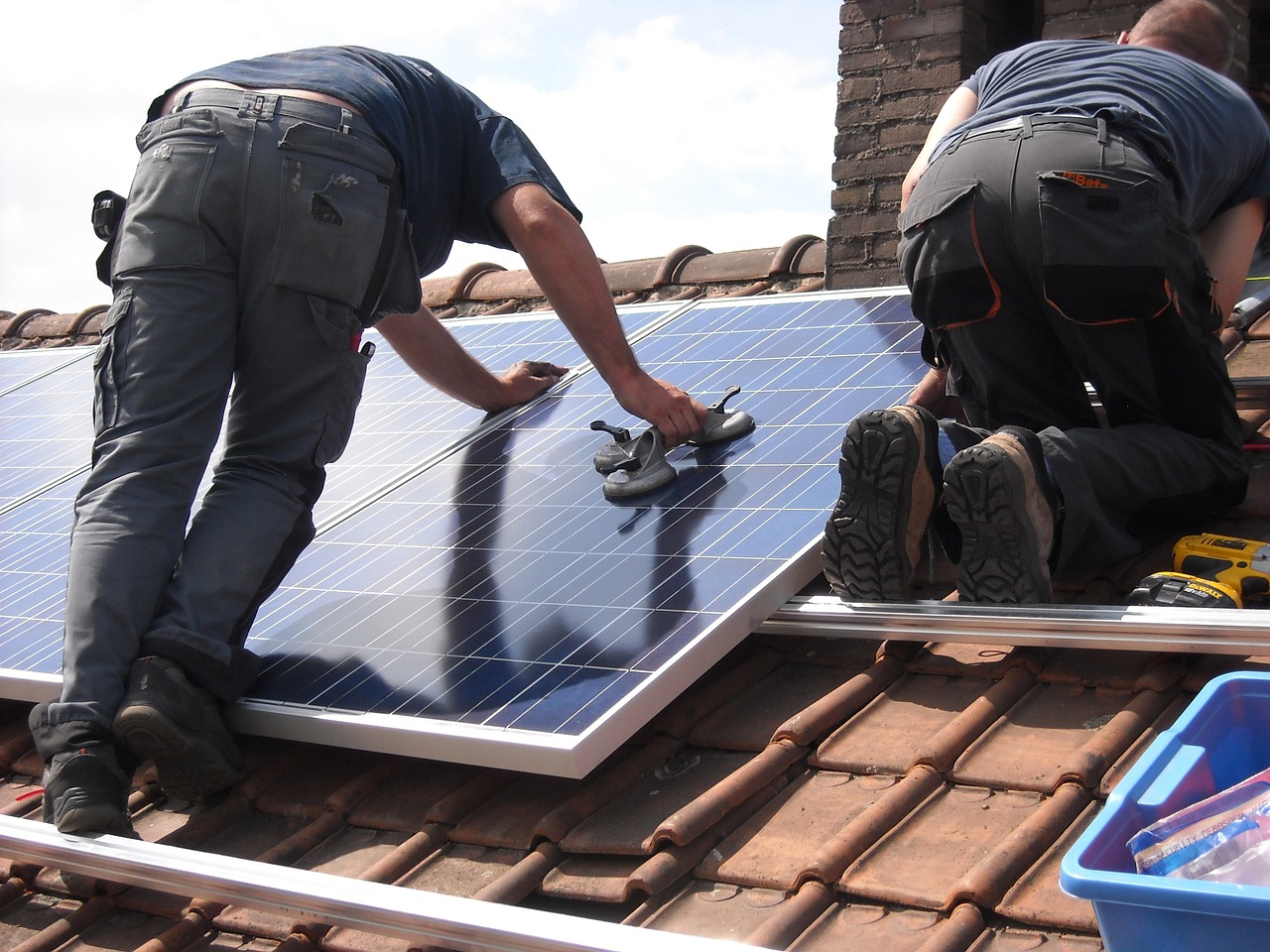
Solar Power for RVs
When it comes to powering your recreational vehicle, solar power has emerged as one of the most popular and effective green energy solutions. Imagine cruising down a scenic highway, the sun shining brightly, and knowing that your RV is running on clean, renewable energy. It's not just a dream; it's a reality that many RV enthusiasts are embracing. The advantages of solar panels are numerous, making them an attractive option for those who want to reduce their carbon footprint while enjoying the great outdoors.
One of the biggest benefits of solar power for RVs is the freedom it provides. With a solar system installed, you can camp off the grid without worrying about running out of power. Whether you're parked in a remote forest or on a beach, your solar panels will continuously generate energy as long as the sun is shining. This means you can power your lights, appliances, and even charge your devices without relying on noisy generators or limited shore power. Plus, the quiet operation of solar systems allows you to fully immerse yourself in nature without the distraction of mechanical noise.
Installing solar panels on your RV can also lead to significant cost savings over time. While the initial investment may seem steep, the long-term benefits can outweigh the costs. Think about it: no more gas for generators, no more campground fees for electricity, and minimal maintenance costs for your solar equipment. In fact, many RV owners report that their solar systems pay for themselves within a few years. Isn’t it comforting to know that your travels can be both enjoyable and economical?
Now, you might be wondering how to get started with solar power for your RV. First, you’ll need to assess your energy needs. Consider what appliances you plan to use and how much power they require. This is where a solar calculator can be handy. Once you have a clear understanding of your energy consumption, you can begin exploring different solar panel options that fit your requirements.
When it comes to choosing solar panels, there are a few key factors to consider:
- Wattage: Higher wattage panels will generate more electricity, which is essential if you plan to power multiple devices.
- Size: Ensure that the panels will fit on your RV’s roof without obstructing ventilation or other essential features.
- Durability: Look for panels that are built to withstand harsh weather conditions, especially if you plan to travel to various climates.
Once you've made your selection, the next step is installation. While some RV owners opt to hire professionals, many choose to take on the challenge themselves. Installing solar panels on your RV can be a rewarding DIY project. Just follow the manufacturer’s instructions carefully, and ensure that you have the right tools on hand. A well-installed solar system can last for decades, providing you with reliable energy for all your adventures.
In summary, solar power is not just a trend; it's a sustainable choice that enhances your RV experience. By harnessing the sun's energy, you can travel more freely, save money, and minimize your environmental impact. So, why not take the plunge? Embrace the power of the sun and make your RV adventures even more memorable!
Here are some common questions about solar power for RVs:
- How much energy do solar panels produce? The energy output depends on the size and efficiency of the panels, as well as the amount of sunlight they receive.
- Can I install solar panels myself? Yes, many RV owners successfully install their solar systems with some basic tools and a bit of research.
- What happens if it’s cloudy or rainy? Solar panels can still generate power in cloudy conditions, but their efficiency will be reduced.
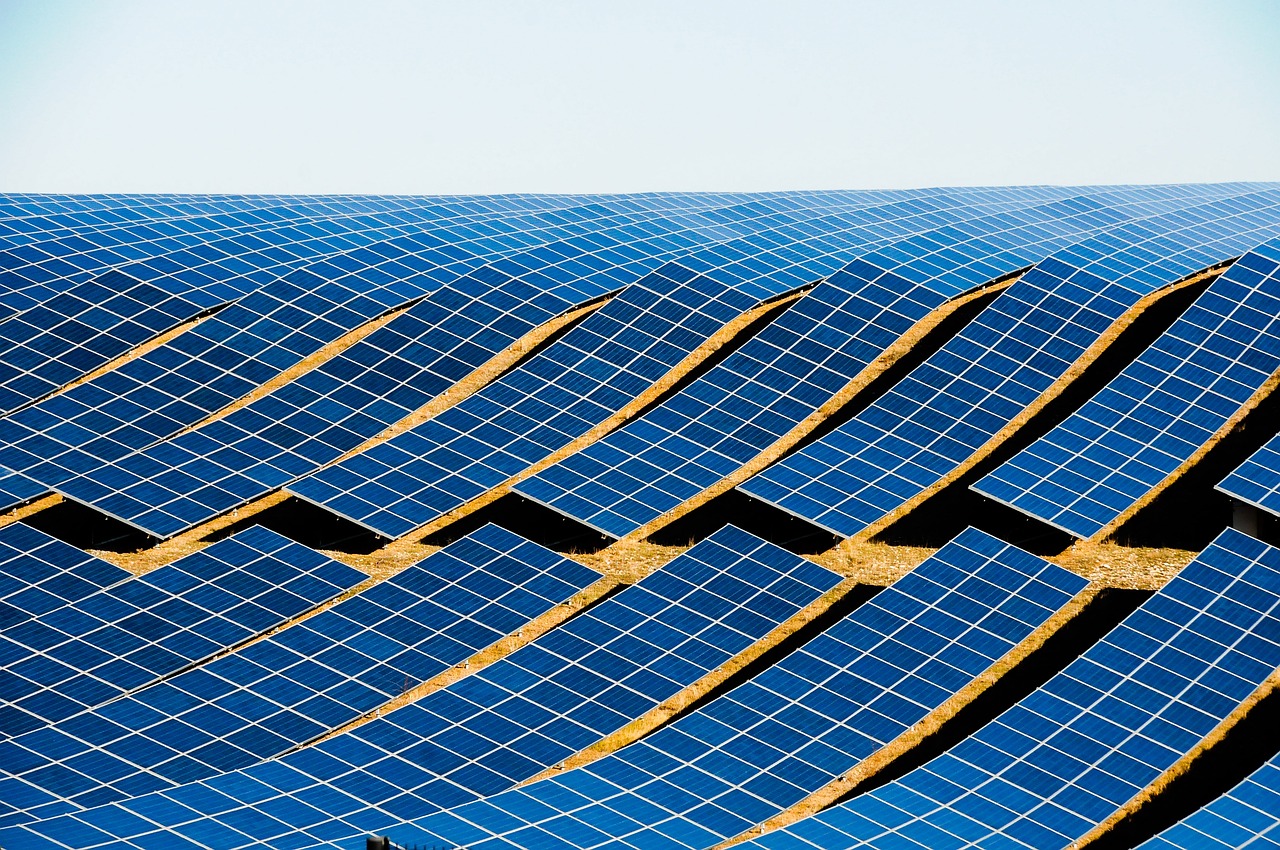
Choosing the Right Solar Panels
When it comes to powering your recreational vehicle with solar energy, is a critical step that can significantly affect your overall experience. With a multitude of options available, it’s essential to understand the different types of solar panels and their respective benefits. Think of it like picking the right tool for a job; using the wrong tool can lead to inefficiency and frustration. So, let’s dive into the world of solar panels and uncover what you need to know!
First off, you need to consider the space available on your RV. The size of your roof will dictate the maximum size and number of panels you can install. If you're limited on space, you might want to opt for high-efficiency panels, which can generate more energy per square foot. On the other hand, if you have ample roof space, you might be able to use standard panels, which are generally more cost-effective.
There are two primary types of solar panels to consider: monocrystalline and polycrystalline. Monocrystalline panels are made from a single crystal structure, making them more efficient and space-saving. However, they tend to be pricier. In contrast, polycrystalline panels are made from multiple crystal structures, which makes them less expensive but also slightly less efficient. Here’s a quick comparison:
| Type | Efficiency | Cost | Best Use |
|---|---|---|---|
| Monocrystalline | 15-22% | Higher | Limited space, higher performance |
| Polycrystalline | 13-16% | Lower | Ample space, budget-friendly |
Another factor to think about is the weather conditions you typically encounter during your travels. If you're often in sunny areas, either type would work well, but if you find yourself in cooler climates, monocrystalline panels may perform better due to their efficiency in low-light conditions. This brings us to the next consideration: your energy needs.
Before making a purchase, it’s wise to calculate how much energy you will need while on the road. Take into account your appliances, lighting, and any other electrical devices you plan to use. This will help you determine the total wattage required and how many panels you’ll need to meet that demand. A good rule of thumb is to aim for a system that can produce at least 20% more energy than you anticipate using. This extra cushion helps account for cloudy days or unexpected usage spikes.
Lastly, don’t forget about the quality and warranty of the panels. Investing in high-quality panels from reputable manufacturers can save you from future headaches. Look for panels that come with a strong warranty—typically around 25 years for performance and material. This not only ensures longevity but also provides peace of mind knowing you’re covered in case something goes wrong.
In conclusion, choosing the right solar panels for your RV is a mix of understanding your specific needs, the space you have available, and the type of energy you want to harness. By taking the time to research and assess these factors, you’ll be well on your way to enjoying a sustainable and efficient RV experience powered by the sun!
- How do I know how many solar panels I need for my RV? Calculate your energy needs by adding up the wattage of all devices you plan to use, and then determine how many panels are required to meet that demand.
- What is the average lifespan of solar panels? Most solar panels have a lifespan of 25-30 years, but their efficiency may decrease over time.
- Can I install solar panels on my RV myself? Yes, many RV owners choose to install solar panels themselves, but make sure to follow the manufacturer's installation guidelines for safety and effectiveness.

Monocrystalline vs. Polycrystalline
When it comes to choosing solar panels for your RV, understanding the difference between monocrystalline and polycrystalline panels is essential. These two types of solar panels dominate the market, each with its own set of advantages and disadvantages. So, how do you decide which one is right for you? Let’s dive into the nitty-gritty!
Monocrystalline solar panels are made from a single crystal structure, which gives them a sleek, dark appearance. One of their standout features is their high efficiency, often reaching up to 22% or more. This means they can convert a larger portion of sunlight into usable energy. If you're limited on space, monocrystalline panels can be a great choice because they require less square footage to generate the same amount of power compared to their polycrystalline counterparts.
On the flip side, polycrystalline solar panels are manufactured from multiple crystal structures, resulting in a bluish hue and a slightly lower efficiency rating, typically around 15% to 20%. While they are generally less efficient, they are often more affordable, making them an attractive option for budget-conscious RV owners. However, because they are less efficient, you may need more surface area to achieve the same energy output, which can be a consideration if roof space is tight.
To help you visualize the differences, here’s a quick comparison table:
| Feature | Monocrystalline | Polycrystalline |
|---|---|---|
| Efficiency | Up to 22% | 15% - 20% |
| Cost | Higher | Lower |
| Space Requirements | Less space needed | More space needed |
| Temperature Performance | Better in high temperatures | Worse in high temperatures |
In addition to efficiency and cost, you should also consider the temperature performance of these panels. Monocrystalline panels tend to perform better in high temperatures, which can be a significant advantage during those hot summer road trips. On the other hand, polycrystalline panels might lose efficiency when the heat rises, so keep that in mind when making your decision.
Ultimately, the choice between monocrystalline and polycrystalline solar panels comes down to your specific needs and budget. If you have limited space and can invest a bit more upfront, monocrystalline panels might be the way to go. However, if you’re looking for a more economical option and have enough roof space, polycrystalline panels could serve you well.
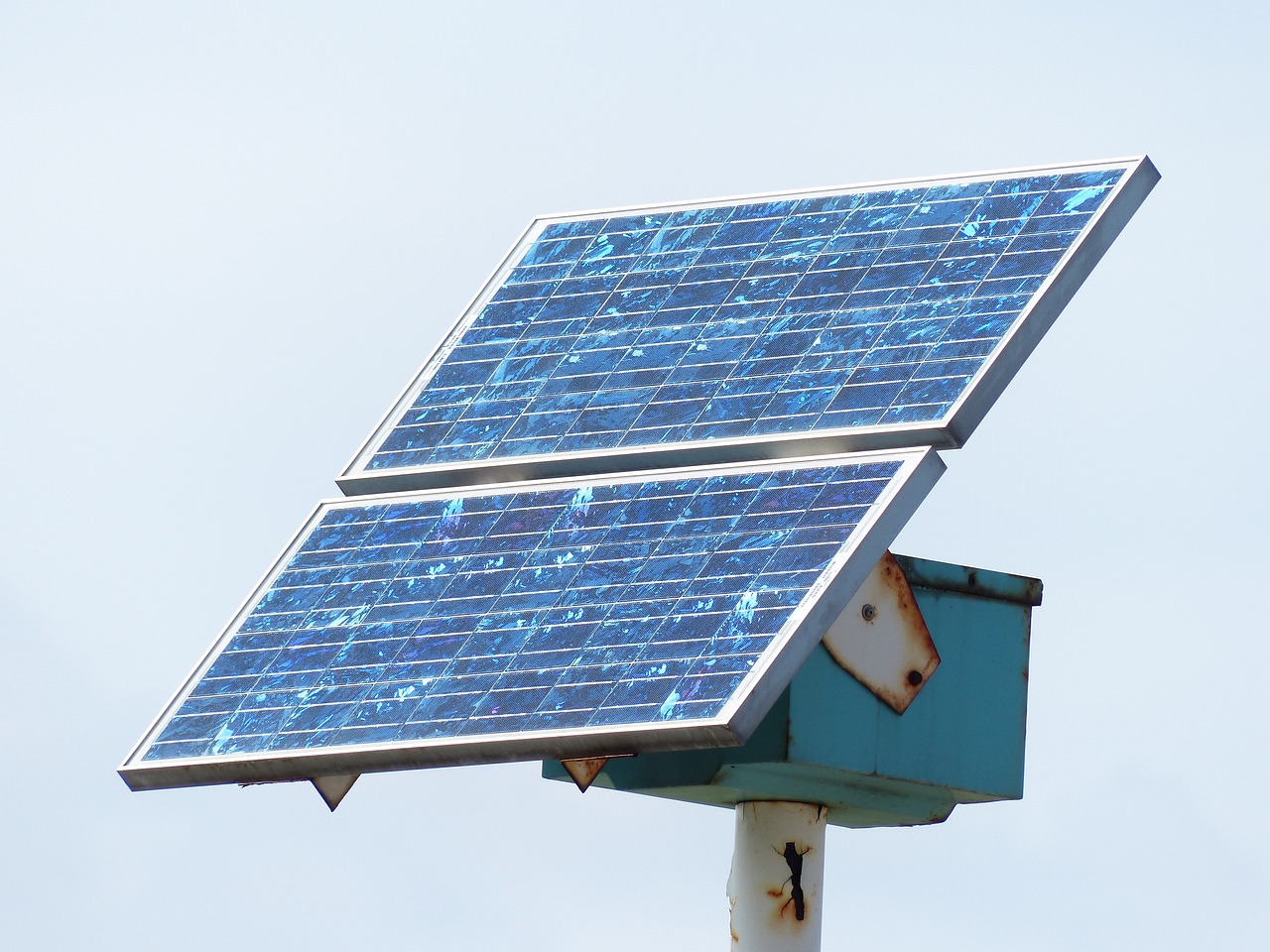
Portable Solar Solutions
When it comes to embracing the freedom of the open road, are a game changer for RV enthusiasts. Imagine being able to harness the sun's energy, no matter where you park your home on wheels. Whether you're camping in a remote location or parked at a bustling RV resort, portable solar panels offer the flexibility and convenience that traditional systems simply can't match. These systems are designed to be lightweight and easy to set up, making them an ideal choice for those who value mobility and simplicity.
One of the biggest advantages of portable solar panels is their versatility. Unlike fixed solar installations, portable panels can be set up in various locations to capture the maximum amount of sunlight. You can easily position them away from the shade of trees or other obstacles, ensuring that you get the most out of your solar investment. Plus, when you're not using them, they can be conveniently stored away, taking up minimal space in your RV.
When selecting a portable solar solution, consider the following features:
- Wattage: The higher the wattage, the more power you can generate. For most RVs, a system between 100 to 400 watts is typically sufficient.
- Weight: If you're frequently on the move, opt for lightweight panels that are easy to transport.
- Durability: Look for panels made from high-quality materials that can withstand the rigors of travel and outdoor conditions.
- Ease of Setup: Choose systems that can be set up quickly, so you can spend more time enjoying your adventures.
Portable solar panels come in various designs, including foldable and rollable options. Foldable panels are compact and can be easily stored when not in use, while rollable panels offer a unique solution that allows you to set up a larger surface area for energy collection. Both options have their merits, and the choice largely depends on your personal preferences and travel style.
Moreover, many portable solar solutions now come equipped with integrated charge controllers, which help regulate the voltage and current coming from the panels to your batteries. This feature is essential for preventing overcharging and ensuring the longevity of your battery system.
In conclusion, are an excellent way to enhance your RV experience while being kind to the environment. They offer the flexibility and efficiency necessary to keep your devices charged and your adventures powered, all while allowing you to enjoy the great outdoors without being tethered to traditional power sources. So, whether you're planning a weekend getaway or a cross-country road trip, consider adding a portable solar system to your RV setup—it's a decision you won't regret!
1. How much power can portable solar panels generate?
The power output of portable solar panels varies based on their wattage. Most portable systems range from 100 to 400 watts, which can adequately power small appliances and charge batteries.
2. Are portable solar panels easy to set up?
Yes! Most portable solar solutions are designed for quick and easy setup, allowing you to get power up and running in just a few minutes.
3. Can I use portable solar panels in cloudy weather?
While portable solar panels are most effective in direct sunlight, they can still generate some power on cloudy days, though the output will be reduced.
4. Do I need a charge controller for my portable solar system?
It's highly recommended to use a charge controller to regulate the voltage and prevent battery overcharging, ensuring the longevity of your battery system.
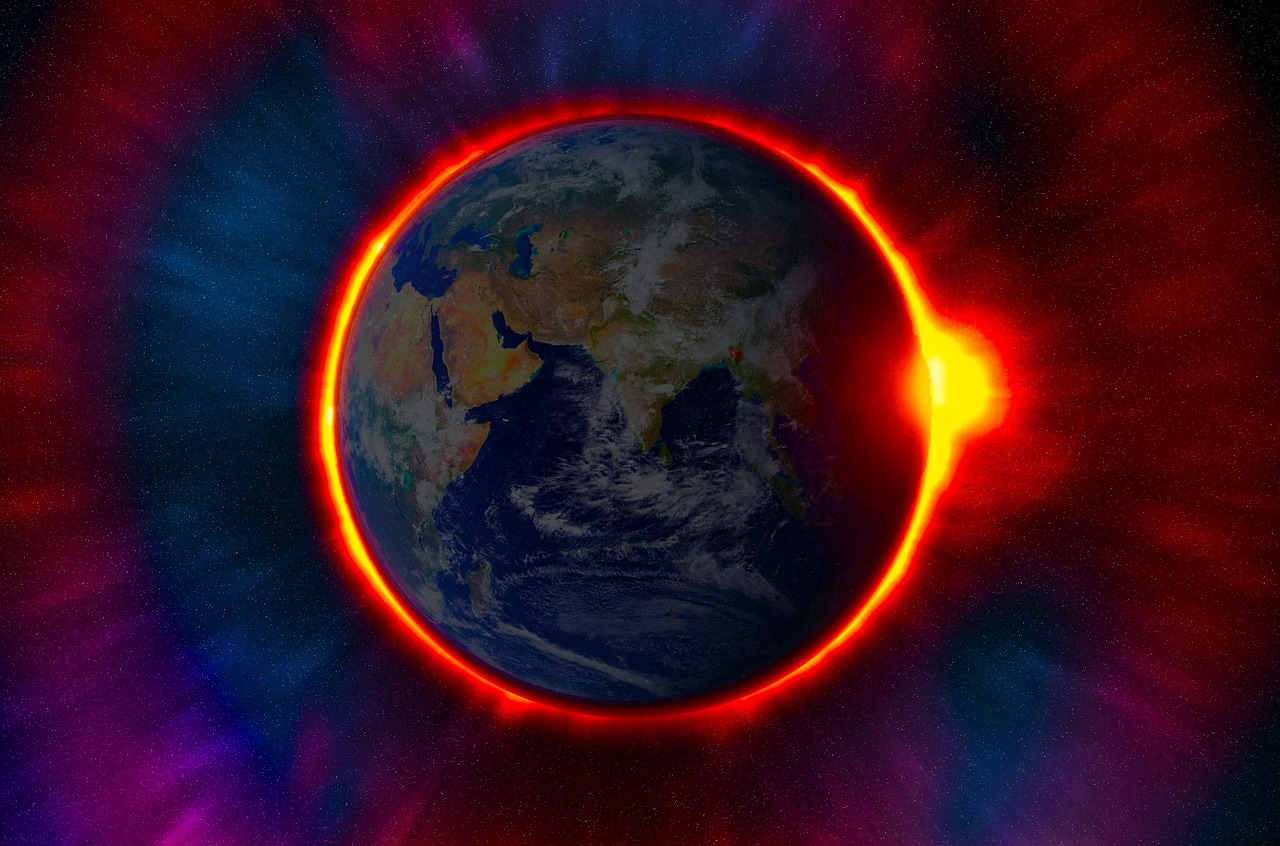
Installing Your Solar System
Installing your solar system in your RV can seem like a daunting task, but it’s actually quite straightforward when you break it down into manageable steps. First and foremost, you’ll want to gather all the necessary materials. This typically includes solar panels, a charge controller, an inverter, and batteries. Think of it like assembling a puzzle; each piece plays a crucial role in creating a complete picture of your energy system.
Before you start the installation, it's important to choose the right location for your solar panels. Ideally, they should be mounted on the roof of your RV where they will receive maximum sunlight exposure. You can use mounting brackets to secure the panels in place. Make sure to check the angle of your roof; tilting the panels slightly can help capture more sunlight, especially during the early morning and late afternoon hours.
Once your panels are securely mounted, the next step is to connect them to the charge controller. The charge controller is like the traffic cop of your solar system, ensuring that electricity flows smoothly from the panels to the batteries without overcharging them. You’ll need to run wires from the solar panels to the charge controller, which is usually installed inside your RV for protection from the elements.
After connecting the charge controller, it's time to hook up your batteries. This is where energy storage comes into play. You can choose between different types of batteries, such as lithium-ion or AGM, depending on your energy needs and budget. Connect the batteries to the charge controller, ensuring that you follow the manufacturer's instructions carefully. This step is crucial because improper connections can lead to performance issues or even damage to your system.
Finally, you’ll need to connect the inverter, which converts the stored DC power from your batteries into AC power for your appliances. The inverter should be wired to the RV’s electrical system, allowing you to use your solar power to run everything from lights to kitchen appliances. It’s like flipping a switch that turns your RV into a mini home powered by the sun!
To give you a better idea of the installation process, here’s a simple overview in table format:
| Step | Description |
|---|---|
| 1. Gather Materials | Solar panels, charge controller, inverter, batteries, wiring, and mounting brackets. |
| 2. Mount Solar Panels | Securely attach panels to the RV roof, ensuring optimal sunlight exposure. |
| 3. Connect Charge Controller | Run wires from the solar panels to the charge controller. |
| 4. Connect Batteries | Hook up batteries to the charge controller, following proper wiring instructions. |
| 5. Install Inverter | Connect the inverter to the RV's electrical system for AC power. |
Now that you understand the basics of installing your solar system, remember that this process may vary slightly based on your specific RV model and the components you choose. Don't hesitate to consult your user manuals or reach out to professionals if you feel uncertain at any stage. With a little patience and attention to detail, you’ll soon be harnessing the power of the sun to fuel your adventures!
Q1: How long does it take to install a solar system in an RV?
A1: The installation time can vary, but most DIY enthusiasts can complete the process in a day or over a weekend, depending on their experience and the complexity of the system.
Q2: Do I need special tools for installation?
A2: Basic tools like a drill, wrenches, and wire cutters are typically all you need. However, specific installations may require additional equipment.
Q3: Can I install a solar system on any RV?
A3: Yes, most RVs can accommodate solar panels, but it’s essential to check your roof space and weight limits to ensure compatibility.
Q4: How much power can I generate with solar panels on my RV?
A4: The power generated depends on the size and number of solar panels installed, as well as sunlight exposure. A typical setup can generate anywhere from 100 to 400 watts.
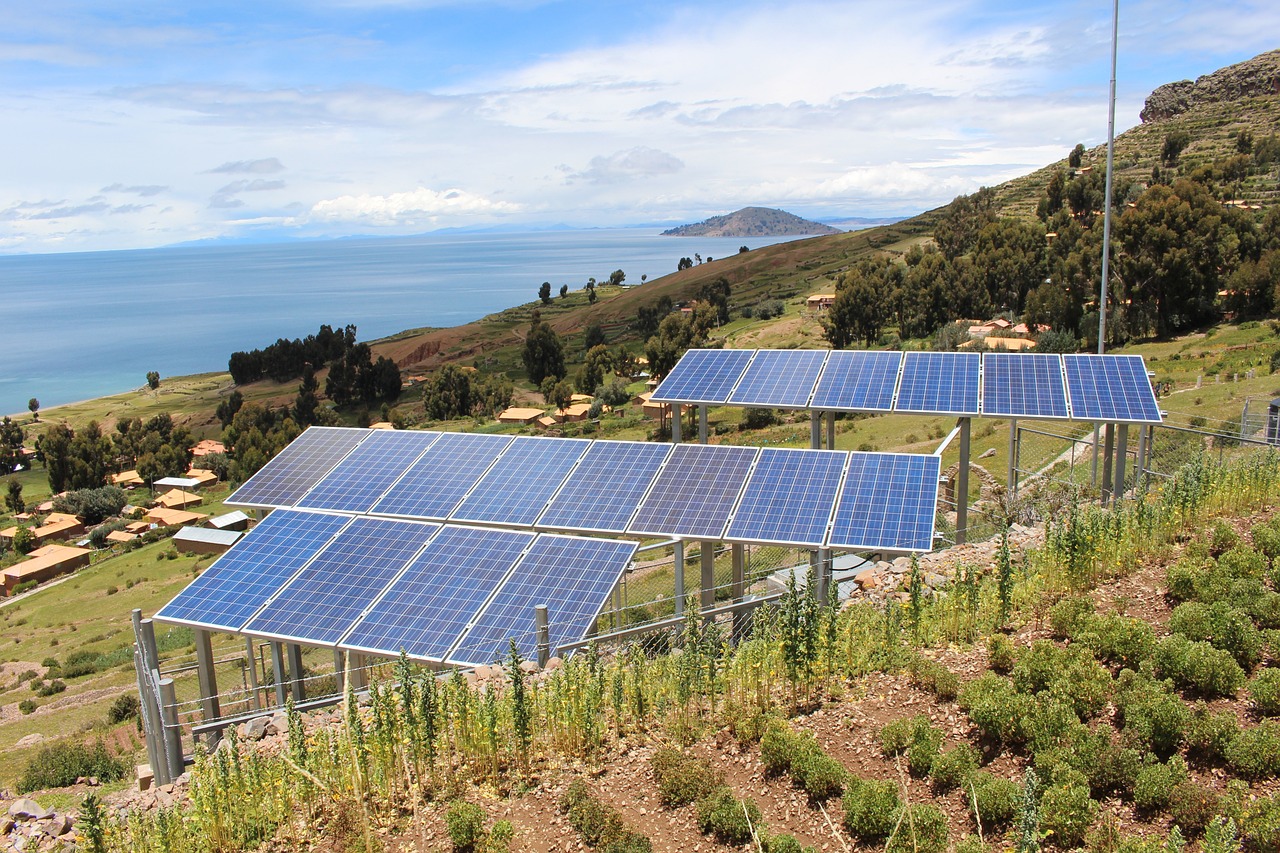
Wind Energy Options
When it comes to powering your recreational vehicle (RV) with green energy, wind energy is a fantastic option that often flies under the radar. While solar panels are the go-to choice for many RV enthusiasts, integrating wind turbines can provide a complementary energy source that enhances your overall energy independence. Imagine cruising through the countryside, the wind whipping past, and knowing that you’re harnessing that very breeze to power your adventures. How cool is that?
Before diving into the specifics, it's important to understand that wind energy can be particularly effective in certain environments. If you often find yourself parked in open fields or near coastal areas, where wind currents are strong and consistent, wind turbines can significantly boost your energy production. However, if your travels take you through mountainous regions or heavily wooded areas, you might find that wind energy is less reliable. So, it’s all about knowing your travel patterns and the natural elements at play.
Now, let’s explore the types of wind turbines available for RV use. There are primarily two categories: horizontal axis wind turbines (HAWT) and vertical axis wind turbines (VAWT). Each has its own set of advantages and disadvantages:
| Type of Wind Turbine | Advantages | Disadvantages |
|---|---|---|
| Horizontal Axis Wind Turbines (HAWT) | Higher efficiency, commonly used, and can generate more power. | Requires more space and must be oriented into the wind. |
| Vertical Axis Wind Turbines (VAWT) | Compact design, can capture wind from any direction, and easier to install. | Generally less efficient and produces less power than HAWTs. |
When considering which type of turbine to install on your RV, think about your specific needs and preferences. If you're looking for maximum energy production and have the space, HAWTs might be the way to go. However, if you're tight on space and want something that’s easier to manage, a VAWT could be your best bet.
Another consideration is the integration of wind energy with your existing solar setup. By combining both solar panels and wind turbines, you can create a more robust energy system that takes advantage of both sunny days and windy nights. This dual approach not only maximizes your energy production but also provides a safety net; if one source is underperforming, the other can pick up the slack. It’s like having a backup plan for your backup plan!
In conclusion, while wind energy may not be the first thing that comes to mind when you think of powering your RV, it certainly has its place in the green energy landscape. By understanding the different types of wind turbines, their advantages, and how they can work alongside solar power, you can make an informed decision that suits your travel lifestyle. So, as you gear up for your next adventure, consider adding a wind turbine to your green energy arsenal!
- Can I use wind energy and solar power together? Yes! Combining both can provide a more reliable energy supply.
- How much wind do I need for a wind turbine to be effective? Ideally, you want consistent winds of at least 10 mph for optimal performance.
- Are wind turbines noisy? Most modern wind turbines are designed to operate quietly, but there may be some noise depending on the model.
- How do I install a wind turbine on my RV? Installation varies by model, but generally involves mounting the turbine securely and connecting it to your power system.
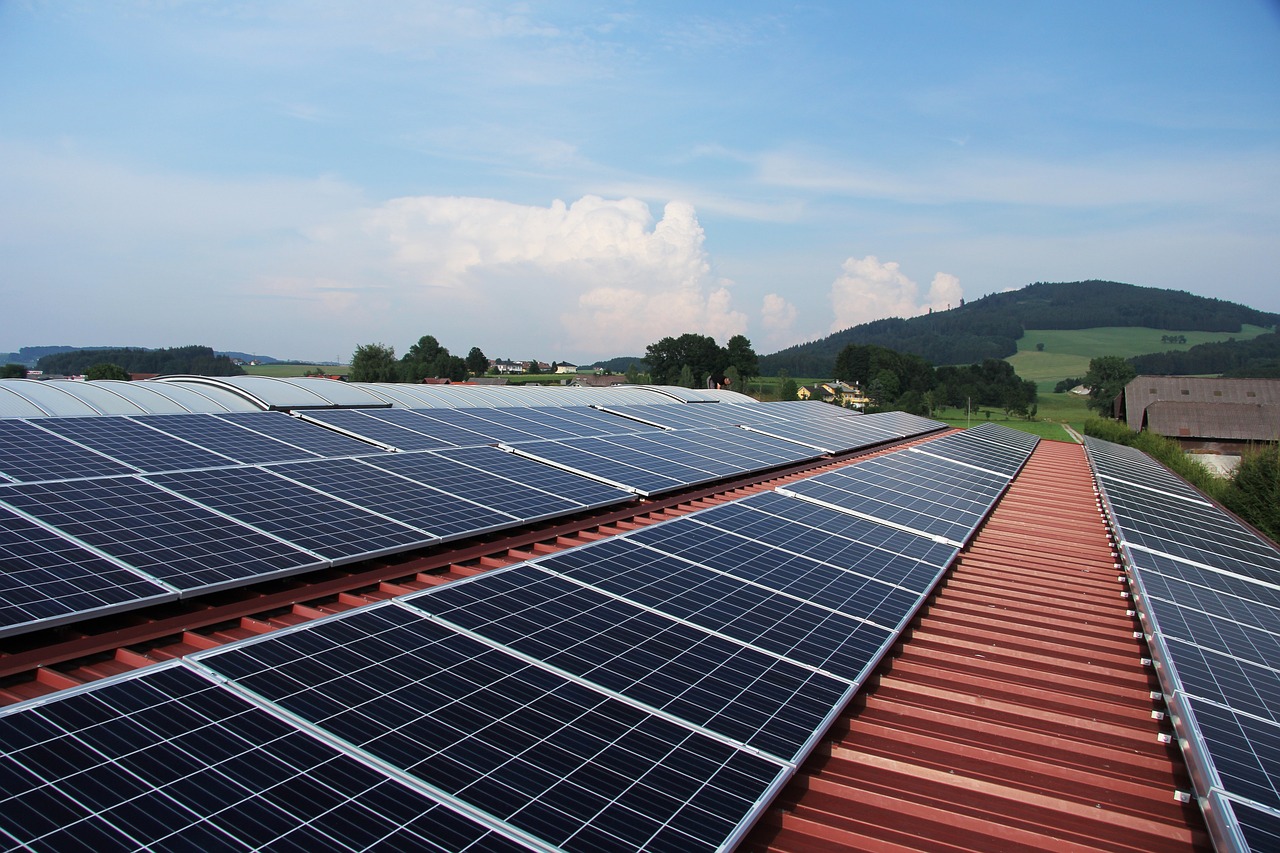
Types of Wind Turbines
When it comes to harnessing wind energy for your recreational vehicle (RV), understanding the different types of wind turbines is essential. Wind turbines can be categorized mainly into two types: horizontal axis wind turbines (HAWT) and vertical axis wind turbines (VAWT). Each type has its own unique set of advantages and disadvantages, making them suitable for different applications and environments.
Horizontal Axis Wind Turbines (HAWT) are the most commonly recognized type of wind turbine. They feature blades that rotate around a horizontal axis, much like the blades of a traditional windmill. These turbines are typically more efficient at converting wind energy into electricity, especially in areas with consistent wind flow. However, they require a specific orientation to face the wind, which can be a limitation in some RV setups.
On the other hand, Vertical Axis Wind Turbines (VAWT) have blades that rotate around a vertical axis. This design allows them to capture wind from any direction, making them a versatile option for RV owners who may not have the ability to adjust their turbine's position frequently. While VAWTs are generally less efficient than HAWTs, their compact design and ease of installation make them appealing for mobile setups.
To help you decide which turbine might be best for your RV, here’s a quick comparison of the two types:
| Type of Turbine | Advantages | Disadvantages |
|---|---|---|
| Horizontal Axis Wind Turbine (HAWT) |
|
|
| Vertical Axis Wind Turbine (VAWT) |
|
|
In conclusion, the choice between HAWTs and VAWTs largely depends on your specific needs and the environment in which you plan to use your RV. If you’re parked in a location with strong, consistent winds, a HAWT might be the way to go. Conversely, if you're looking for something more flexible and easier to manage, a VAWT could be a better fit. Ultimately, understanding these differences will empower you to make an informed decision that enhances your RV experience while tapping into the power of green energy.
Q: Can I use both solar and wind energy in my RV?
A: Absolutely! Many RV owners combine solar panels and wind turbines to create a more robust and reliable energy system. This allows you to harness energy from both the sun and wind, maximizing your green energy potential.
Q: How do I know which wind turbine is right for my RV?
A: Consider factors such as your typical travel locations, wind conditions, and the amount of space you have available for installation. Researching and possibly consulting with experts can also help in making the right choice.
Q: Do wind turbines require a lot of maintenance?
A: Generally, wind turbines require minimal maintenance, especially if they are well-designed and installed correctly. Regular inspections and occasional cleaning are usually sufficient to keep them in good working condition.
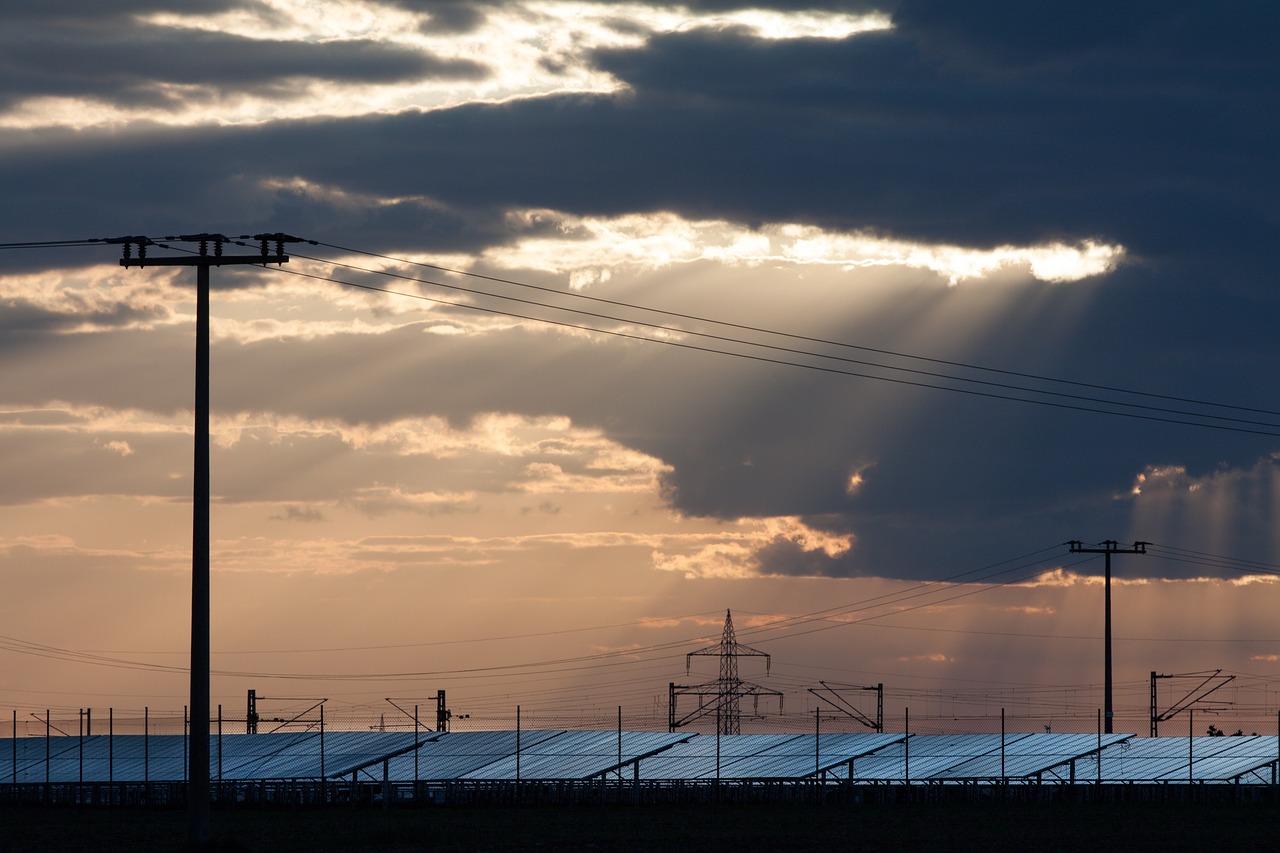
Battery Storage Solutions
When it comes to powering your recreational vehicle (RV) with green energy, battery storage is a crucial component that often gets overlooked. Think of your battery system as the heart of your RV's energy setup; it stores the energy generated by your solar panels or wind turbines, ensuring you have a reliable power source whenever you need it. The right battery not only enhances your energy efficiency but also extends your adventures into the wild, far from traditional power sources. So, how do you choose the best battery for your RV? Let’s dive into the various options available.
There are primarily two types of batteries that RV owners consider: lithium-ion batteries and Absorbent Glass Mat (AGM) batteries. Each type comes with its own set of advantages and disadvantages, making it essential to understand their unique characteristics before making a decision. Here’s a quick comparison:
| Battery Type | Pros | Cons |
|---|---|---|
| Lithium-ion |
|
|
| AGM |
|
|
When choosing the right battery, consider factors such as your power needs, weight limitations, and budget. For instance, if you plan on taking extended trips off the grid, investing in a lithium-ion battery might be worth the upfront cost due to its longevity and efficiency. On the other hand, if you're just starting out or have a limited budget, AGM batteries can still offer reliable performance.
Once you've selected your battery, proper maintenance is essential to ensure it serves you well throughout your adventures. Regularly checking the battery's connections, cleaning terminals, and monitoring the charge levels can significantly extend its lifespan. Additionally, be mindful of the operating temperature; extreme heat or cold can affect performance. If you notice any swelling or leaking, it's time to replace the battery before it becomes a hazard.
In conclusion, investing in the right battery storage solution for your RV can enhance your green energy experience immensely. Whether you opt for the advanced technology of lithium-ion or the tried-and-true AGM, understanding your options will empower you to make an informed choice that aligns with your travel lifestyle.
1. How long do RV batteries typically last?
The lifespan of RV batteries varies based on the type. Lithium-ion batteries can last up to 10 years, while AGM batteries typically last between 3 to 5 years with proper care.
2. Can I use my RV battery for other applications?
Yes, RV batteries can be used for other applications, such as powering tools or electronics while camping, but ensure the battery can handle the load.
3. How do I know if my battery needs to be replaced?
Signs that your battery may need replacement include swelling, leaks, reduced capacity, or if it fails to hold a charge.
4. Is it worth investing in a lithium-ion battery for my RV?
If you frequently travel off-grid or require a reliable and lightweight power source, investing in a lithium-ion battery can be beneficial in the long run.

Maintaining Your Battery System
When it comes to maximizing the performance and longevity of your RV's battery system, regular maintenance is key. Just like a car needs oil changes and tire rotations, your battery system needs attention to ensure it operates efficiently. Think of it as nurturing a plant; with the right care, it thrives and provides you with the energy you need to enjoy your adventures.
First and foremost, it’s essential to regularly check the battery's water levels if you’re using lead-acid batteries. These batteries require distilled water to maintain their electrolyte levels. If the water level is too low, it can lead to damage and reduced performance. Aim to check this every month, especially during hot weather when evaporation can occur more rapidly. Always make sure to top off with distilled water, but avoid overfilling, which can lead to spills and corrosion.
Another critical aspect of battery maintenance is ensuring that the terminals are clean and free from corrosion. Corroded terminals can hinder the flow of electricity, which means your RV may not start or may not run efficiently. To clean the terminals, you can use a mixture of baking soda and water. Apply it with a toothbrush, scrub gently, and then rinse with water. Make sure to dry everything thoroughly before reconnecting the terminals.
Additionally, consider investing in a battery monitor. This device provides real-time data on your battery's state of charge, voltage, and overall health. With this information, you can make informed decisions about when to charge or replace your batteries. It’s like having a health tracker for your battery system!
Temperature also plays a significant role in battery performance. Extreme cold can reduce battery efficiency, while extreme heat can cause batteries to degrade faster. If possible, store your RV in a temperature-controlled environment when not in use. If you’re on the road, try to park in shaded areas during hot weather and avoid exposing your batteries to freezing temperatures.
Lastly, consider performing a load test on your batteries at least once a year. This test will help you determine if your batteries are still holding a charge adequately. Many auto parts stores offer this service, or you can purchase a load tester to do it yourself. If your batteries are failing the load test, it may be time to replace them before they leave you stranded.
In summary, maintaining your battery system involves a combination of regular checks, cleaning, monitoring, and protecting your batteries from extreme conditions. By following these simple steps, you can ensure that your RV is always ready to hit the road, providing you with the freedom to explore without the worry of power issues.
- How often should I check my RV battery? Ideally, you should check your battery at least once a month, especially during peak travel seasons.
- What should I do if my battery is not holding a charge? If your battery isn’t holding a charge, it may be time for a load test. If it fails, consider replacing it.
- Can I use regular water in my lead-acid batteries? No, you should always use distilled water to prevent mineral buildup and corrosion.
- How can I tell if my battery terminals are corroded? Look for a white, powdery substance around the terminals. This indicates corrosion.
Frequently Asked Questions
- What is green energy and why is it important for RVs?
Green energy refers to renewable energy sources that are environmentally friendly, such as solar and wind power. For RV enthusiasts, using green energy is crucial because it reduces the carbon footprint of their travels, allowing them to enjoy nature without harming it. Imagine exploring the great outdoors while knowing you're leaving no trace behind!
- How do I choose the right solar panels for my RV?
Choosing the right solar panels involves considering factors like efficiency, size, and budget. Monocrystalline panels are typically more efficient but can be pricier, while polycrystalline panels are more affordable but slightly less efficient. Think of it like picking the right tool for the job; you want something that fits your specific needs and budget!
- Can I install solar panels on my RV myself?
Yes, you can install solar panels on your RV yourself! With the right tools and instructions, it can be a fun DIY project. Just make sure to follow the installation steps carefully to ensure optimal performance. It's like assembling a puzzle—once all the pieces fit together, you’ll have a beautiful picture of sustainable energy!
- What are the benefits of portable solar solutions?
Portable solar solutions offer flexibility and convenience, allowing you to harness solar energy wherever you go. They're perfect for camping trips or when you're parked in a shady spot. Think of them as your trusty sidekick, ready to provide power whenever you need it!
- Is wind energy a viable option for RVs?
Yes, wind energy can be a viable option for RVs, especially in areas with consistent wind. However, the size and type of wind turbine you choose will depend on your specific needs and the space you have available. It's like having a backup plan; sometimes the wind is just as reliable as the sun!
- What types of batteries are best for RV energy storage?
The best types of batteries for RV energy storage include lithium-ion and AGM batteries. Lithium-ion batteries are lightweight and have a longer lifespan, while AGM batteries are more affordable and easier to maintain. It's like choosing between a sports car and a reliable sedan—both get you where you need to go, but one might suit your style better!
- How can I maintain my RV's battery system?
Maintaining your RV's battery system involves regular checks, keeping terminals clean, and ensuring they're charged properly. Just like taking care of a pet, your batteries need attention and care to perform their best and last longer!



















